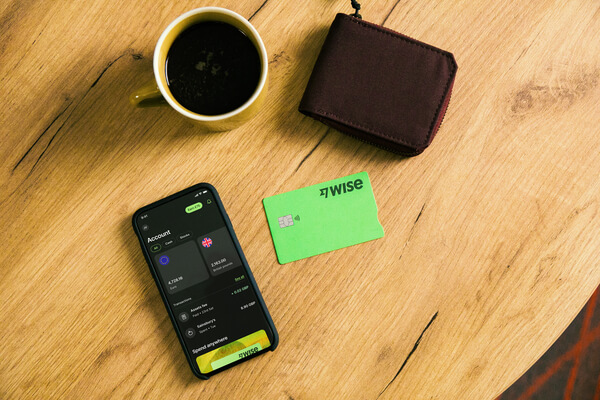How to open a Virgin Money Australia account. The steps, fees and requirements.
Looking for how to open a bank account with Virgin Money in Australia? We’ve got you covered. Here’s the process, fees and what you need to know.

Japan is one of the most popular foreign destinations for both expats and tourists. The main Japanese cities for expats are Tokyo, Osaka and Nagoya. However, many foreigners also reside in smaller cities with an international commercial presence. Since 1991, the expat community has doubled and migration to Japan continues to grow.
If you’re considering relocating to Japan, you’ll need a bank account. Here are some tips to help you set up your Japanese finances.
To open a bank account in Japan, you’ll need:
You'll be given the choice of your 4-digit personal identification number (PIN) and receive a passbook which you can use to update your account balance at the ATM. Your passbook will include your account name, the 3-digit sort code of your local branch, and your 7-digit account number.
You might be surprised when the bank asks you if you're a member of a criminal organisation. Thanks to Japanese regulations, this question is required for all new bank accounts, and should not alarm you.
Unfortunately, due to the complicated status of working visas, opening a Japanese bank account from overseas isn’t possible. Additionally, as you are required to show your residence card when opening an account, non-residents aren't permitted to open an account. Tourist visas aren’t accepted in place of residence cards. Consult the Japanese Financial Services Agency website for more information on rules and requirements.
Though Japanese is a very high-tech country, banking in Japan is done in the traditional way. Some banks do allow you to make an initial application online, but eventually they require you to show up in-person with the documents listed above. Also, Japanese society is more reliant on cash than a typical Western country.

Old-world bank accounts only work properly in one country. They hold money only in one currency. And it gets expensive when you try to use them across borders. Wise's new Borderless accounts solve all of this.
Now you can send, receive and organise your money internationally, without crazy fees or even-crazier exchange rates – just a small, fair charge when your money moves between currencies.
Many expats swear by Shinsei Bank, Mizuho and SMBC Trust Bank (until recently, Citi’s Japanese retail operation). The first two banks require a certain level of Japanese to open a bank account. SMBC Trust Bank is a good choice for those who require English assistance by telephone and online.
Japan houses a plethora of international ATMs and banking partners, including the following:
For a full list visit the results of KMPG Foreign Banks in Japan Survey 2016.
As an expat, you’re likely to bank with one of the following retail operations:
The process of opening a bank account in Japan is relatively simple if you have all necessary documents. After opening your account, you'll receive your cash card in approximately 10 days, which you can use to make withdrawals in any of your bank’s branches.
Most of the larger banks in Japan offer an online banking system to make your banking easier. Some branches of SMBC and Shinsei Bank offer English-speaking staff, perfect for those who are new to Japan and haven’t had time to practice the language.
Note that bank ATMs can also be found in many convenience stores, metro stations, and train stations in large cities. In rural areas, local banks and the post office are more common. Either way, it's never a bad idea to carry spare cash for emergencies.
You generally won’t pay a fee to open a bank account in Japan, and there isn’t a minimum deposit required. Interest rates are often quite low. However, you’re likely to pay small ATM fees from banks outside your local network. Sometimes, banks will charge you out-of-hours charges for services outside of normal banking hours (9AM to 5PM weekdays). The larger banks like Shinsei and Citi emphasise free withdrawals from many partner ATMs around Japan.
Japan remains a largely cash-based society, and credit cards aren't a popular means of payment. Luckily, it's generally quite safe to carry around large amounts of cash. Credit cards are accepted at most large hotels, restaurants, and retailers, but you may face a usage charge.
You should expect to pay a charge for transferring money to another bank account, even if both accounts are domestic. The charge depends on the amount of money you’re sending and the bank you’re sending it to. The ATM lets you know what the charge will be, and then you indicate that you’re willing to pay it. If you like, you can set up an ongoing payment, by having a transfer card printed. A transfer card will remember all of your information, and won’t make you go through all of the screens on the ATM.
International money transfer fees depend on the international bank and the partnership between the bank and Japan. You should expect to pay substantial fees. You'll encounter a great deal of variety in fees and exchange rates, which can make it difficult to plan ahead. Rumour has it that at some banks, you can pay extra to transfer money at a quicker speed, although this isn’t its official policy. To transfer money you'll always need proof of identity, and you'll pay at least 2,500 Yen per transfer.
Additionally, banks may mark up the interbank exchange rate, or the true exchange rate at which banks buy and sell currency. If you’re not careful, you may be subject to commission fees and unfair exchange rates every time you transfer internationally.
You can avoid these fees entirely, if you have a bank account in Japan or know someone who does. Use Transferwise to transfer money using the real interbank rate.
*Please see terms of use and product availability for your region or visit Wise fees and pricing for the most up to date pricing and fee information.
This publication is provided for general information purposes and does not constitute legal, tax or other professional advice from Wise Payments Limited or its subsidiaries and its affiliates, and it is not intended as a substitute for obtaining advice from a financial advisor or any other professional.
We make no representations, warranties or guarantees, whether expressed or implied, that the content in the publication is accurate, complete or up to date.

Looking for how to open a bank account with Virgin Money in Australia? We’ve got you covered. Here’s the process, fees and what you need to know.

Learn how to close your Revolut Australia account. The steps, options and important need-to-knows before your begin.

If you’re a student juggling study alongside work and social commitments, ensuring you have reliable and easy access to your money is essential. Choosing a...

Coming into student life something you might not think to address straight away is your banking. Many Australian banks offer accounts designed for students,...

Depending on the bank, student bank accounts might have extra features or slightly better conditions for those studying, when compared to a standard account....

Here’s how to close your ME Bank account and options to move your money out correctly